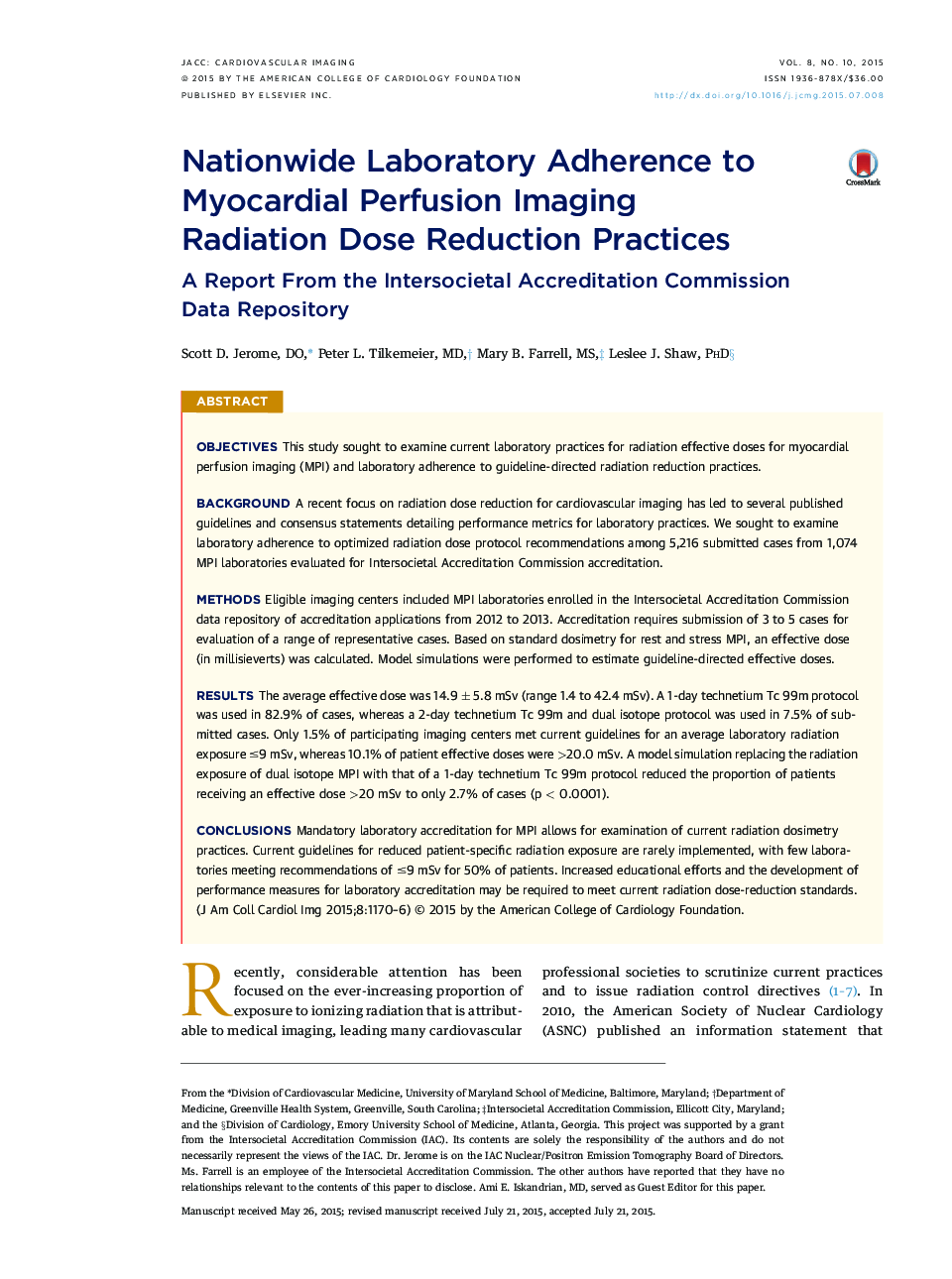| کد مقاله | کد نشریه | سال انتشار | مقاله انگلیسی | نسخه تمام متن |
|---|---|---|---|---|
| 2937850 | 1176903 | 2015 | 7 صفحه PDF | دانلود رایگان |
ObjectivesThis study sought to examine current laboratory practices for radiation effective doses for myocardial perfusion imaging (MPI) and laboratory adherence to guideline-directed radiation reduction practices.BackgroundA recent focus on radiation dose reduction for cardiovascular imaging has led to several published guidelines and consensus statements detailing performance metrics for laboratory practices. We sought to examine laboratory adherence to optimized radiation dose protocol recommendations among 5,216 submitted cases from 1,074 MPI laboratories evaluated for Intersocietal Accreditation Commission accreditation.MethodsEligible imaging centers included MPI laboratories enrolled in the Intersocietal Accreditation Commission data repository of accreditation applications from 2012 to 2013. Accreditation requires submission of 3 to 5 cases for evaluation of a range of representative cases. Based on standard dosimetry for rest and stress MPI, an effective dose (in millisieverts) was calculated. Model simulations were performed to estimate guideline-directed effective doses.ResultsThe average effective dose was 14.9 ± 5.8 mSv (range 1.4 to 42.4 mSv). A 1-day technetium Tc 99m protocol was used in 82.9% of cases, whereas a 2-day technetium Tc 99m and dual isotope protocol was used in 7.5% of submitted cases. Only 1.5% of participating imaging centers met current guidelines for an average laboratory radiation exposure ≤9 mSv, whereas 10.1% of patient effective doses were >20.0 mSv. A model simulation replacing the radiation exposure of dual isotope MPI with that of a 1-day technetium Tc 99m protocol reduced the proportion of patients receiving an effective dose >20 mSv to only 2.7% of cases (p < 0.0001).ConclusionsMandatory laboratory accreditation for MPI allows for examination of current radiation dosimetry practices. Current guidelines for reduced patient-specific radiation exposure are rarely implemented, with few laboratories meeting recommendations of ≤9 mSv for 50% of patients. Increased educational efforts and the development of performance measures for laboratory accreditation may be required to meet current radiation dose-reduction standards.
Journal: JACC: Cardiovascular Imaging - Volume 8, Issue 10, October 2015, Pages 1170–1176
